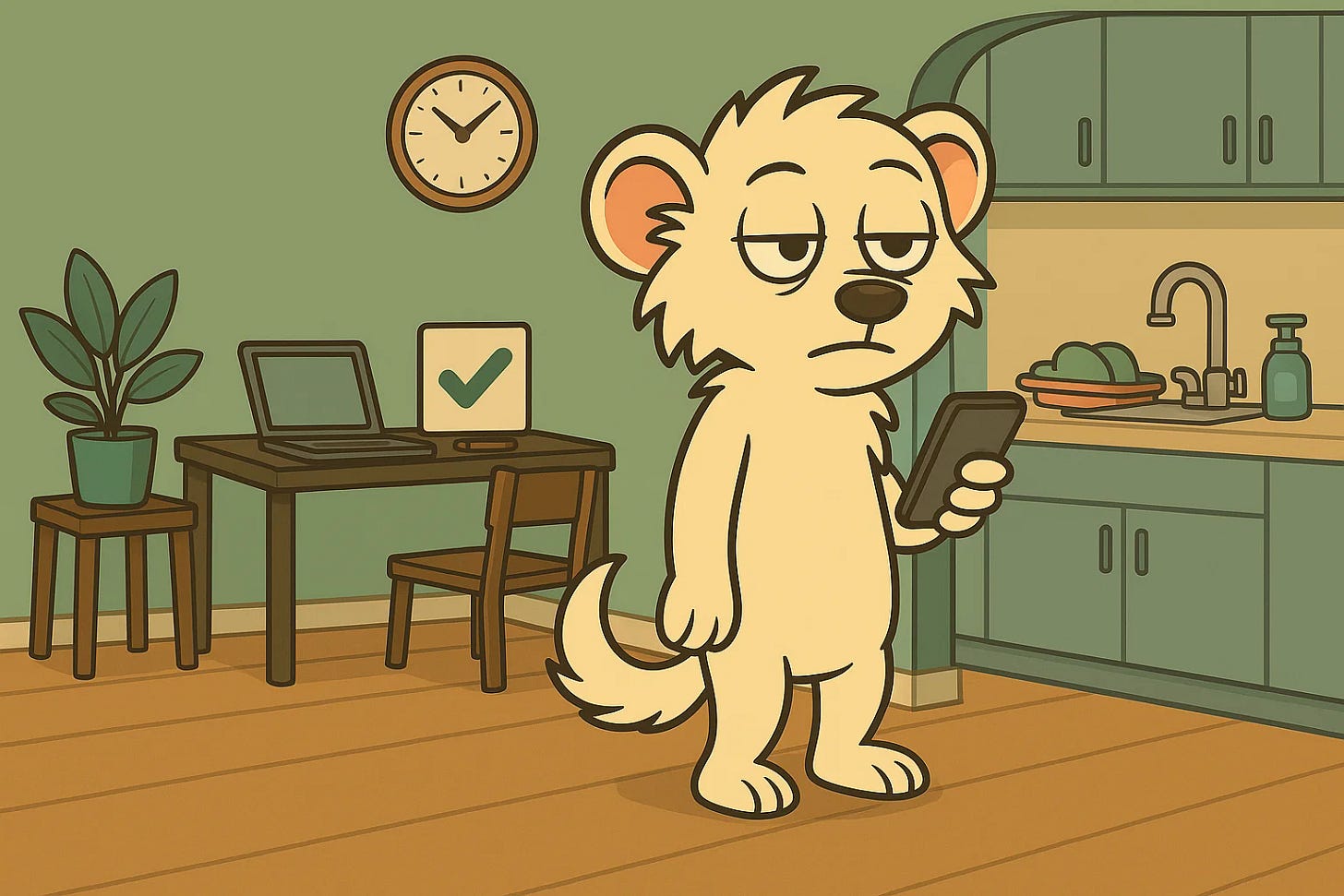Make the Handoff Easy: Simple Cues for Smoother Transitions
Build a practical bridge between tasks
You click send and the screen goes quiet. The cursor blinks. You check the time, glance at your phone, and float in place while the next task waits. Your brain hums but your body does not move.
I lose so much time in that float. The moment I need to change gears, my brain idles and the guilt starts creeping in. It feels harmless, then half an hour is gone.
What works the best for me is a small bridge. One act to end clean, one cue to begin, and one tiny first action that gets me in motion. Repeatable, even on low-energy days.
Feeling stuck between tasks is so common with ADHD. If switching activities leaves you feeling lazy, frustrated, or wondering "what's wrong with me?", you're not alone. Your brain isn't failing you on purpose. ADHD makes shifting focus costly. With the right cue, the handoff gets lighter and the next step shows up.
Close one, spark the next
One way to make task switching easier is to use a short ritual between tasks. A ritual tells your brain one chapter has ended and another is about to begin. It creates a clean edge. For example, when I finish writing an email, I stand up, stretch, and say done as I close the email tab. Then I take a sip of water and look at my next task. By the time I sit back down, my brain has shifted lanes.
Your ritual can be anything quick that gives you a micro reset. Play a two minute song. Do three squats. Wipe the crumbs from your desk. Carry a cup to the sink. These actions are tiny, but they give your attention something simple and concrete to do while you let go of the last task.
Start with something you already do. If you always grab a glass of water mid afternoon, claim that as your bridge. Pair it with a short phrase like closing and starting. Consistency matters more than perfection. The goal is to build a small doorway your brain learns to walk through without drama.
Name the first small step
Another way to ease transitions is to know exactly how to start the next task. Big, vague tasks overwhelm the ADHD brain, so choose one tiny action as your starting point.
Say you need to tidy the living room. Instead of getting overwhelmed by the whole mess, decide the first step is to put the pillows back on the couch. Once that's done, you've started. The next small step, like tossing some trash, feels easier. The same trick works for work projects: if I have to write a report, I might start by opening a document and typing just one sentence. Taking that first tiny action gives you a foothold and stops the overthinking spiral.



